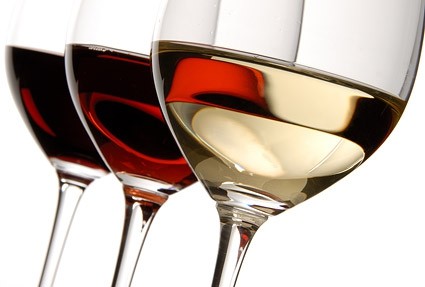Sip Easy: Secrets to Wine Savvy

Sip Easy covers the enchanting world of cocktails, beer, wine, and all-things alcoholic.
There’s nothing quite as relaxing as generous pour of wine after a long day — but when it comes to the nuances of wine, how do you choose between Malbec and Shiraz? Pinot Grigio and Viognier?
To boost my wine savvy, I turned to Tria, one of Philadelphia’s finest wine bars. With his tried-and-true tips, Tria partner Michael McCaulley gave me the tools to navigate any wine and cheese soiree effortlessly:
Know thy importer
Rather than getting caught up in trying to gauge quality by the grape, let the importer do the work for you — check on the back of the bottle to find importers you can trust to vouch.
“For European wines, it’s very important to know the importer since this is who is selecting — and rejecting — the wines for you,” McCaulley explained. “Good importers only bring in the wines that they think are best, so when you find the best importers, you can comfortably say that the wine will be good enough.”
Discovering the best importers takes time, but McCaulley offered me his top three:
- When you want something traditional, try Rare Wine. The hallmark of their wines is authenticity — anything they touch is made in old school, traditional wineries. Look for their label with a castle.
- For wines from Spain and South Africa, try Boutique Wines. As a bonus, this company is based in West Philadelphia. Look for the label with the scales of justice, to symbolize balanced wine.
- Some of the best French wines come from Kermit Lynch. For half a century, Lynch himself has been handpicking the best wines from France, and many of his relationships with French wineries are decades old. Look for the label of two sailors coupled with the Thomas Jefferson quote: “Good wine is a necessity of life for me.”

Ask about tannins
If you want to seem ultra wine savvy, ask about tannins: the leathery skin-of-the-grape that makes wine taste fuller.
“One of the reasons people gravitate toward red wine is because it has tannins,” explained McCaulley, “but so does coffee and tea.” Think about tannins the same way you think about steeping a cup of black tea: If you leave the tea bag in for two seconds, the tea will be very light and barely flavorful; for two minutes, it might be just perfect; for two hours, it might be too bitter and tannic.
“The same is true of wine. So if you’re looking for a red wine, you might ask, ‘How tannic is it?’ If it’s light and fruity, it won’t be very tannic and it won’t dry your mouth out, so that’s a good choice to drink on its own. But if it’s really tannic, you definitely need to have food with it.” For a point of reference, compare a Pinot Noir (less tannic) to a Cabernet Sauvignon (more tannic).

Pair by compare and contrast
Pairing wine with cheese can seem daunting — how can you ensure that the flavors complement each other?
“Two simple ways to pair are compare and contrast,” recommended McCaulley. For comparisons, couple like-flavors: tangy or citrusy fruits and cheeses complement crisp, fruity white wines; cured or gristly meats pair well with leathery Italian reds. On the opposite side of the spectrum, luscious or creamy flavors can be balanced by dryer, sparkling wines.
One of McCaulley’s favorite wines to pair is LBV, a Late Bottle Vintage Port wine.
“They run about $20 a bottle and they’re strong — about 20% alcohol, dark, rich, and sweet. It’s classically paired in England with a bleu cheese called Stilton, which is a creamy, fudgy cow’s milk bleu. The sweetness of the port mitigates the saltiness of the cheese, and the fruitiness balances the bleu vein punchy quality. It’s a beautiful marriage.”
For classic, fail proof wine and cheese pairings, try these:
- Goat cheese with Sauvignon Blanc
- Brie or camembert with Prosecco
- Cured meat or prosciutto with Tuscan Chianti
- Bleu cheese with Port
Voilà: savoir-faire du wine!
Tria is located in Rittenhouse Square (123 S. 18th Street) or Washington Square West (1137 Spruce Street), and additionally offers a course on “Wine 101” at their Fermentation School (1601 Walnut Street).
– Arielle Pardes
